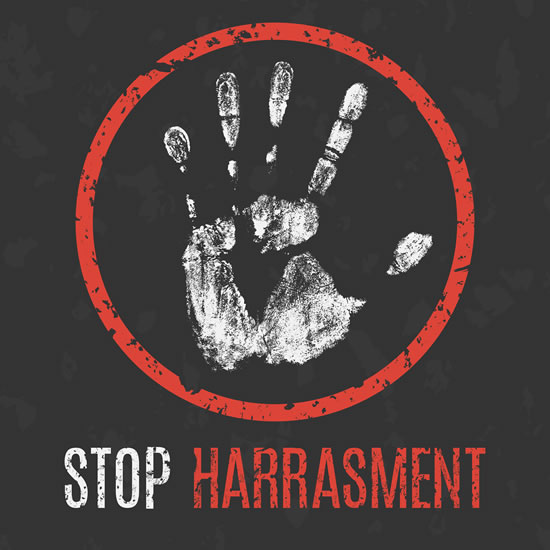South Africa is cracking the whip on sexual harassment and officials have urged victims of workplace harassment to come forward and report incidents.
 More often than not, victims of harassment are unaware of the crime that has been committed against them, while some are scared and even embarrassed to come forward to place a formal complaint.
More often than not, victims of harassment are unaware of the crime that has been committed against them, while some are scared and even embarrassed to come forward to place a formal complaint.
What is sexual harassment?
Sexual harassment in the workplace is any unwanted attention of a sexual nature that takes place in the work environment that causes mental, psychological, physical or economic harm to another person.
This is any kind of sexual behaviour that makes you feel uncomfortable, including:
- Touching
- Unwelcome sexual jokes
- Unwarranted questions about your sex life
- Whistling
- Rude gestures
- Requests for sex
- Staring at your body in an offensive way.
What to do if you are sexually harassed?
If you are a victim of sexual harassment you can deal with it in an informal or formal way.
Informal way
This is when you try to sort out the problem without taking up a grievance (formal workplace complaint) against the abuser.
Ways of taking informal action:
- Talk to the abuser and ask him/her to stop the behaviour that makes you feel uncomfortable.
- If you feel uncomfortable about being alone with the abuser, you can ask someone that you trust to come with you when you talk to the abuser.
- Ask someone else to speak to the abuser. You can ask your shop steward or a work colleague to do this for you.
Formal way
- Where a formal procedure has been chosen by the aggrieved, a formal procedure for resolving the grievance should be available and should:
- Specify to whom the employee should lodge the grievance.
- Make reference to timeframes which allow the grievance to be dealt with expeditiously.
- Provide that if the case is not resolved satisfactorily, the issue can be dealt with in terms of the dispute procedures contained in item 7(7) of the Code of Good Practice on Sexual Harassment.
Sexual harassment and the law
Prior to 2011, the civil and criminal law framework did not provide adequate recourse to victims of harassment who are not in a domestic relationship.
This meant that only victims of harassment in a domestic partnership could come forward. The Domestic Violence Act, 1998, provides only for a remedy against harassment and stalking in a domestic relationship.
To address the problem of non-domestic harassment, the Protection from Harassment Act, 2011 (Act 17 of 2011) was introduced to protect everyone against harassment.
The Act provides help to victims, in the form of a protection order, which bans a person from harassing another person.
“If the harasser breaches a protection order he or she commits an offence which is punishable with a fine or a period of imprisonment,” explains Sarel Robbertse, a state law advisor at the Department of Justice and Constitutional Development.
A complainant is a person who has allegedly been the victim of harassment and is bringing forward a claim.
Robbertse also explained that the Act states that a child under the age of 18, or a person on behalf of a child, may apply for a protection order. This can be done without the assistance of the child’s parents or guardian.
The Act also makes provision for sexual harassment, which relates to “any unwelcomed sexual attention from a person who reasonably knows that such attention is unwelcomed”.
Such sexual attention includes unwelcomedbehaviour, suggestions, messages or remarks of a sexual nature that offend, intimidate or humiliate a complainant or a person who has a close relationship with the complainant.
Sexual harassment victim gets help
A former victim of sexual harassment, Claire Browns from Upington, Northern Cape, filed a protection order after alleging that a male colleague was sexually harassing her.
“My colleague made remarks towards me of a sexual nature that made me feel uncomfortable,” she highlighted.
Browns laid a formal complaint of harassment and filed a protection order.
The Protection from Harassment Act also provides for a mechanism to assist in finding out the identity and address of a harasser who uses electronic communications to harass victims.
The court may direct an electronic communications service provider to supply the court with the name, surname, identity number and address of the cyber harasser; and any other available information that will validate the harassment of the complainant.
Sinenhlanhla Mkhwanazi works for the Department of Justice and Constinutional Development.
*Additional information from: www.mywage.co.za

 Facebook
Facebook Twitter
Twitter WhatsApp
WhatsApp